I started to garden seriously at a new house in a new subdivision, where there weren’t more than a few houses on our street. I knew next to nothing, which is probably why I put shovel to soil and blindly accepted the 10 pounds of clay that accumulated on each shoe and the 20 pounds of it that made the shovel feel like Thor’s hammer. It was a good workout — but it didn’t have to be so back-breaking.
If only I knew then what I knew now — that working with clay soil requires a different strategy, one that can be more economical and increase gardening satisfaction. Yes, I’ll say it: Clay soil is awesome.
Not sure if you have clay soil? Do a soil test yourself
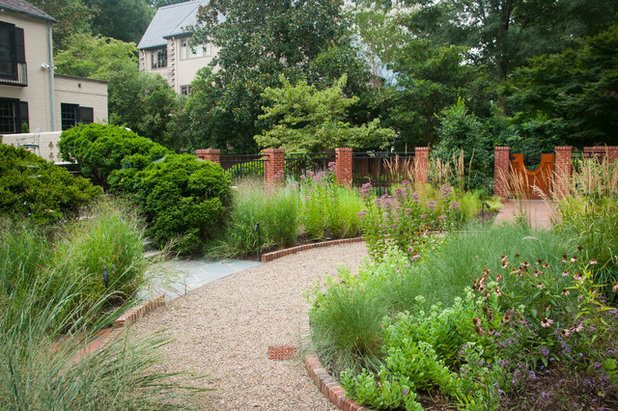
groundworks studio
There are a few basic soil types: loam, silt, sand and clay, with variations between. We’ve been taught to want a loam or silt-loam soil, with its high organic matter and nice drainage, but it’s OK if you don’t already have that magical concoction. I’m here to tell you that you can still have the flower garden of your dreams in clay without having to buy amendments by the truckload or till it all in — disrupting soil structure and life as you till.
If you take the same weight of clay and sand, the surface area of the particles in clay are 1,000 times that of sand. Those clay particles are almost flat, which means they can hold on to nutrients and water longer. You don’t have to fertilize clay soil as nearly as some others — and maybe you don’t have to fertilize at all. How can you celebrate clay?
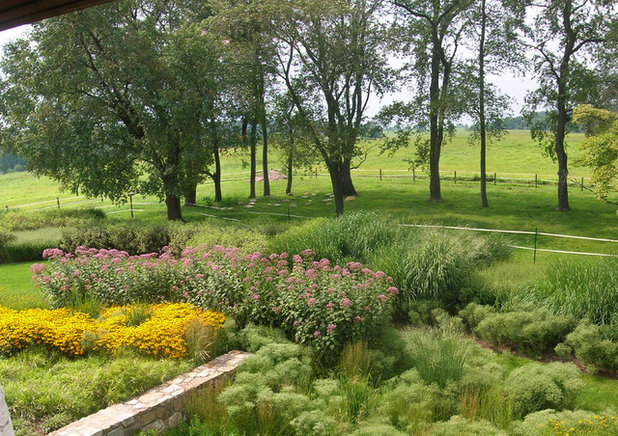
jonathan alderson landscape architects, inc.
Match the plants to the soil. We should always strive for this, even if it means sacrificing a dream for some special plant. It’s paramount that we accept our landscapes, just as we hope to accept ourselves and one another. New, meaningful possibilities open up when you embrace what you’re given and work within its supposed confines.
Countless native grasses and forbs (herbaceous, broad-leaved plants) with various ranges thrive in clay soil. Clay-tolerant plants such as blue wild indigo (
Baptisia australis), aromatic aster (
Symphyotrichum oblongifolium), swamp milkweed (
Asclepias incarnata), little bluestem (
Schizachyrium scoparium),Virginia mountain mint (
Pycnanthemum virginianum), American senna (
Senna hebecarpa), blazing star (
Liatris spp.) and prairie clover (
Dalea spp.) are all highly beneficial to pollinators too.
Good tree choices include bur oak (
Quercus macrocarpa), hackberry (
Celtis spp.), willow (
Salix spp.) and crabapples (
Malus spp.). Downy arrowwood (
Viburnum rafinesquianum), ninebark (
Physocarpusopulifolius), chokeberry (
Aronia spp.), buttonbush (
Cephalanthus spp.) and arborvitae (
Thuja spp.) are good shrubs for growing in clay.
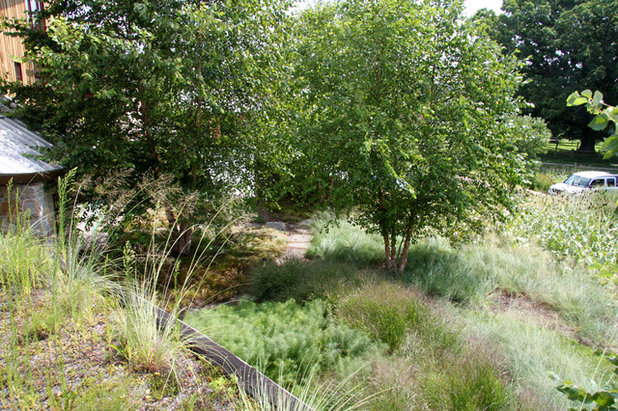
jonathan alderson landscape architects, inc.
Save time and energy with smaller plants. Ideally, we dig holes twice as wide as the plant container size when planting, so roots can establish more easily. Even if you have a gallon-size pot, it can be a pretty good-size hole when you’re working in heavy clay. And if you have a dozen of those? No thanks. Give me plugs and 3-inch pots — cheaper from the get-go; faster to dig, because the hole is smaller; and they’ll establish just as quickly as larger plants. (A pickax is one of my favorite tools for digging plugs.)
Another bonus of pint-size plants? You can buy more, which creates a thicker garden. The plants act as a green mulch, outcompeting weeds, shading the soil and conserving moisture. Plus, that green mulch also translates into more decaying matter, which over time will amend your soil from the top down. When you cut down the garden each spring, use all that detritus as mulch.
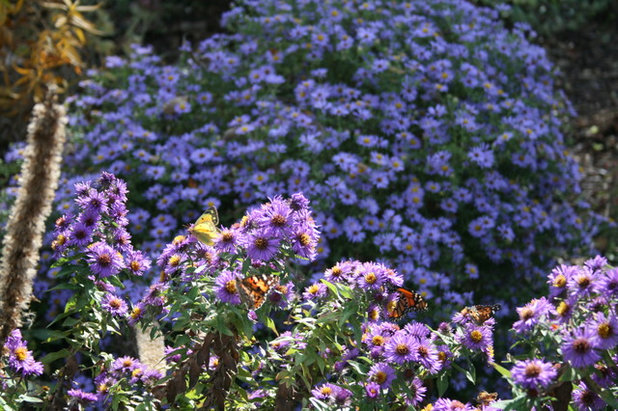
Benjamin Vogt / Monarch Gardens
Welcome the benefits of clay’s structure. Clay does benefit those who live in the northern part of the U.S., even though it takes a bit longer to warm up in spring and is unworkable in its wet state during that time. Roots can get a good hold and anchor into clay soil’s basically flat layers, which is especially beneficial during the freeze-thaw cycles in northern climates. A new plant in loam or sand might heave up out of the soil, exposing its roots to killing air, but not in clay.
Additionally, clay is fantastic at sequestering carbon, because the high organic matter and lesser amounts of air in it mean there’s less decomposition going on; some products of decomposition include methane and carbon dioxide, greenhouse gases that heat the atmosphere. Let plants take carbon from the air and store it underground.
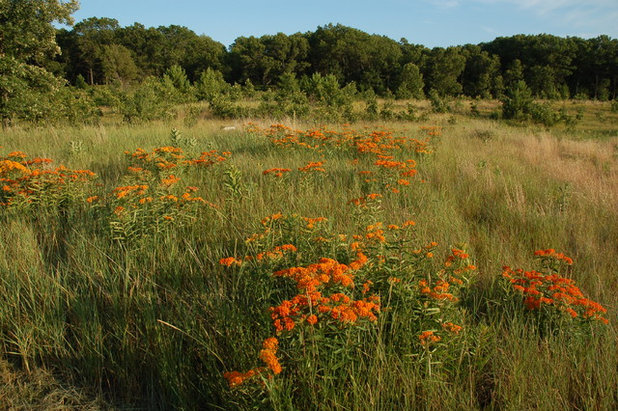
Sparrow Landscaping LLC
I know many won’t be convinced yet of clay soil’s awesomeness, but it really is a great medium to work with, not against. It’s got a solid amount of organic matter, and there are countless plants that will thrive in it.
Think about those meadow or prairie plants, whose ranges extend across most of the U.S. — they can lose up to one-third of their roots each year, which means that as they decay, they amend the soil naturally while creating pathways for water and air to penetrate deeper. Combine this knowledge with the practice of leaving the spring cuttings on the soil surface, and even in just a few years you’ll notice improvement in drainage in wet areas and plant health and flower abundance in dry areas.





